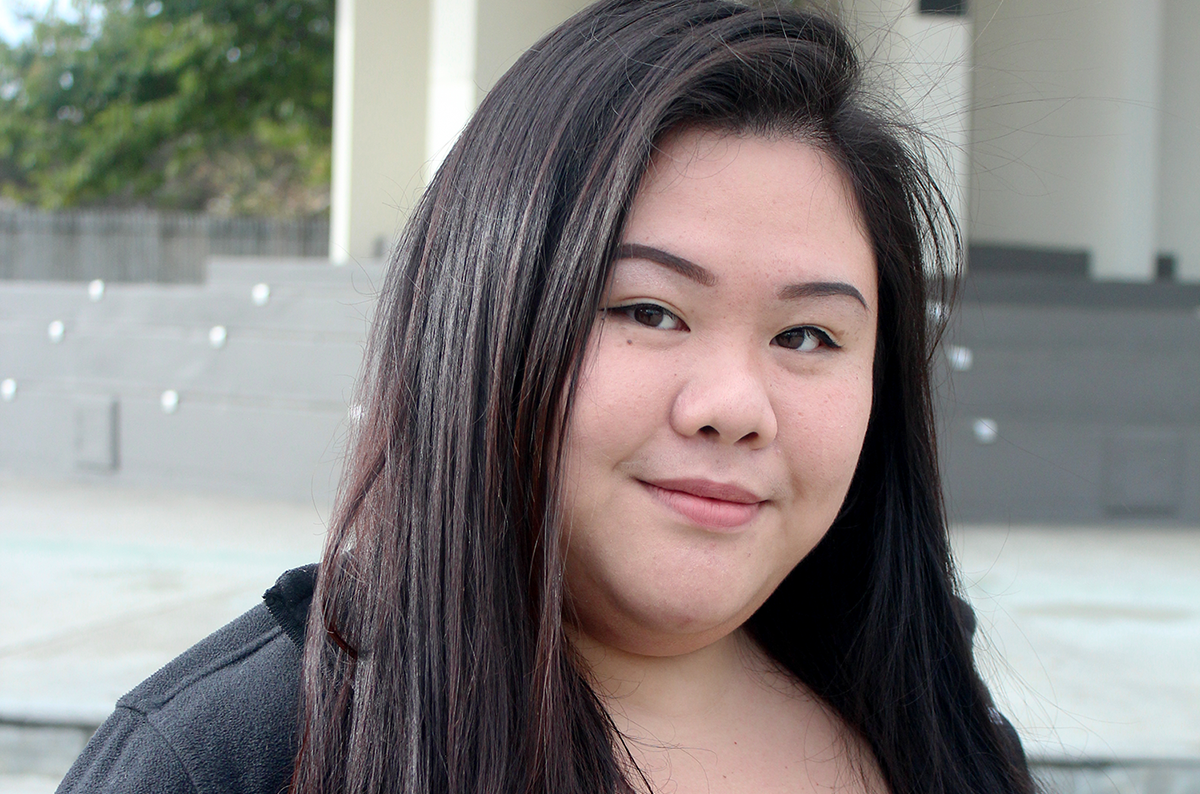
Alyana Feliciano, winner of the $5,000 Hearth Home Inclusive Design Scholarship, designed an app that supports low-income students by helping them navigate competitive college applications.
“My idea is to create an app that acts as a toolkit to guide and support low-income students by helping them navigate competitive college applications,” Feliciano says. “The need for such an app can be supported by numerous studies showing that while all students encounter struggles in the college going application process, it can be especially difficult for low-income students.”
Feliciano, a 22-year-old Visual Communication Design major from San Francisco, plans to graduate this May. Her career aspiration is to become a user-interface/user-experience (UI/UX) designer with a focus on developing applications for low-income American students. Her design values align with her experiences as a low-income and first-generation immigrant student from the Philippines, she says.
Her goal is to create equitable and inclusive apps that will uplift the community, she also works part-time as an educational adviser for the Japanese Community Youth Council and Mission High School, working with low-income and first-generation students with college application needs. Feliciano also helps her students address issues of homelessness, abuse, immigration fears and many more. This has been a major source of inspiration for her career aspirations.
“We encourage Alyana to continue her mission to use design as a catalyst, in an inclusive and collaborative manner, to facilitate the well being and vision of underserved communities from a cultural and socioeconomic perspective,” Professor Ricardo Gomes says.
How did your studies as a design major at SF State help you to win the Hearth Homes Inclusive Design Scholarship?
The series of classes that I’ve taken so far — Design and Society, Graduate Research and Writing with Professor Hsiao-Yun Chu, Design Process, as well as my internship at the Nathan Shapira Design Archive with Professor Ricardo Gomes — have given me a unique perspective on problem solving, because I am now able to empathize and understand human problems.
I believe I came out of these classes with the experience and projects I needed to prove to the Hearth Homes Inclusive Design committee that I am fully committed to using design as a platform for social change and equity.
How did you come up with the idea for the UX/UI design for the scholarship competition?
The idea for my app is created with the intention of helping students overcome common struggles such as mistranslating applications, lack of information and a lack of connection to available resources. There is a breadth of knowledge about the process; however, it is sometimes difficult for students to identify the information that pertains directly to them due to the sheer amount of resources out there.
My app will solve this by allowing the user to create personalized profiles that maximize inclusivity and will ultimately connect them with the information they need.
Give us a brief description of your design process.
When approaching design problems, the first few things I think about is access. Will the app be universal in design, and can anyone access this? For example, if I were to design an app to promote local and fresh food, I would ask, “Can someone from a low-income community access this app? Or, can someone with physical disabilities travel to (x location?) without a problem?”
If the answer is no, I immediately turn to research and even use social media to gather data. From there, I gather inspiration from my market research and mood boards to put together prototypes with Adobe XD.
What advice do you have for students seeking scholarships in a competitive application process?
As an educational adviser myself, I was so inspired by my hard-working students who would take time to apply and seek for internships and scholarships despite having school, family responsibilities and work. I, myself, work three part-time jobs but found it inspiring to apply for several scholarships not only for the money, but for something I could put on my resume.
My advice to anyone who is looking for scholarships opportunities is that they are already ahead of the game just by looking for the opportunity. I don’t think about the competition because my approach is that I have a unique story to share. Once I stopped being scared of requirements and actually did the paperwork for one scholarship, I reused and tailored my answers based on the opportunity. Also, make sure you get to know your professors. They’re people, too! I have two to three professors who I can really say are my mentors and are always willing to give me support with letters of recommendation or advice.
What are your lifelong career aspirations?
I have always had the dream to change the world, and I finally found that design is my platform to pursue it. Becoming a UX/UI designer is my chance to uplift the voices of marginalized communities and put them at the forefront. The design landscape is always evolving, and I’m not sure where it is heading, but I can only look forward to becoming better at what I do.
— Ufuoma Umusu